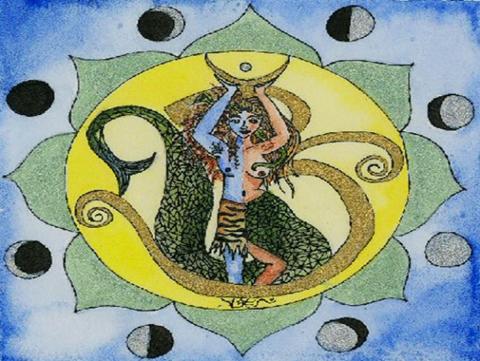Soma is both the name of a god and a substance in Hindu mythology. As a deity, Soma is one of the most important gods in the Rigveda. According to the Puranas, Soma is often depicted as a god riding a three wheeled chariot that is pulled by a team of 10 white horses, or a celestial bull, a giant rising from the waters, a bird, the lord of plants, and an embryo. He is an ancient deity who is in charge of several important aspects of life, one being the bringer of fortune and health.
The substance soma is said to be a drink that was originally consumed by the Hindu gods, though it was later stolen for mankind by Agni, the fire god. Soma the god and soma the drink are intertwined with each other, the god being a personification and presiding deity of the latter, made from the Soma creeper. This juice has been compared to the ambrosia of Greek mythology, and was said to have been originally consumed by the Hindu gods in order for them to gain their immortality. Before his battle with the great dragon Vritra, the god Indra drank rivers of soma so that he would have the strength required to overcome his adversary.
As a sacred drink, soma was supposedly consumed during rituals by the priestly class in ancient times. When it is drunk by mortals outside a ritual context, soma is said to possess uplifting qualities and boost the energy and alertness of its drinker. Thus, soma is often said to bring human beings closer to the gods.
Although soma is depicted in the Hindu scriptures as an important component of divine worship, it seems that nobody really knows for certain what soma actually is. Some have argued that soma causes hallucinations, thus candidates for soma that fall under this category include cannabis, opium, and hallucinogenic mushrooms. Others have proposed that soma could be milk, honey, and pomegranates. The question of what soma actually is may never be resolved.
Archaeological investigations might add a new dimension to this debate. In Turkmenistan, a large shrine dating to the second millennium BC was discovered with ceramic bowls containing traces of cannabis and Ephedra. It has been suggested that the priests at the shrine were consuming a hallucinogenic drink, perhaps as part of their rituals.




